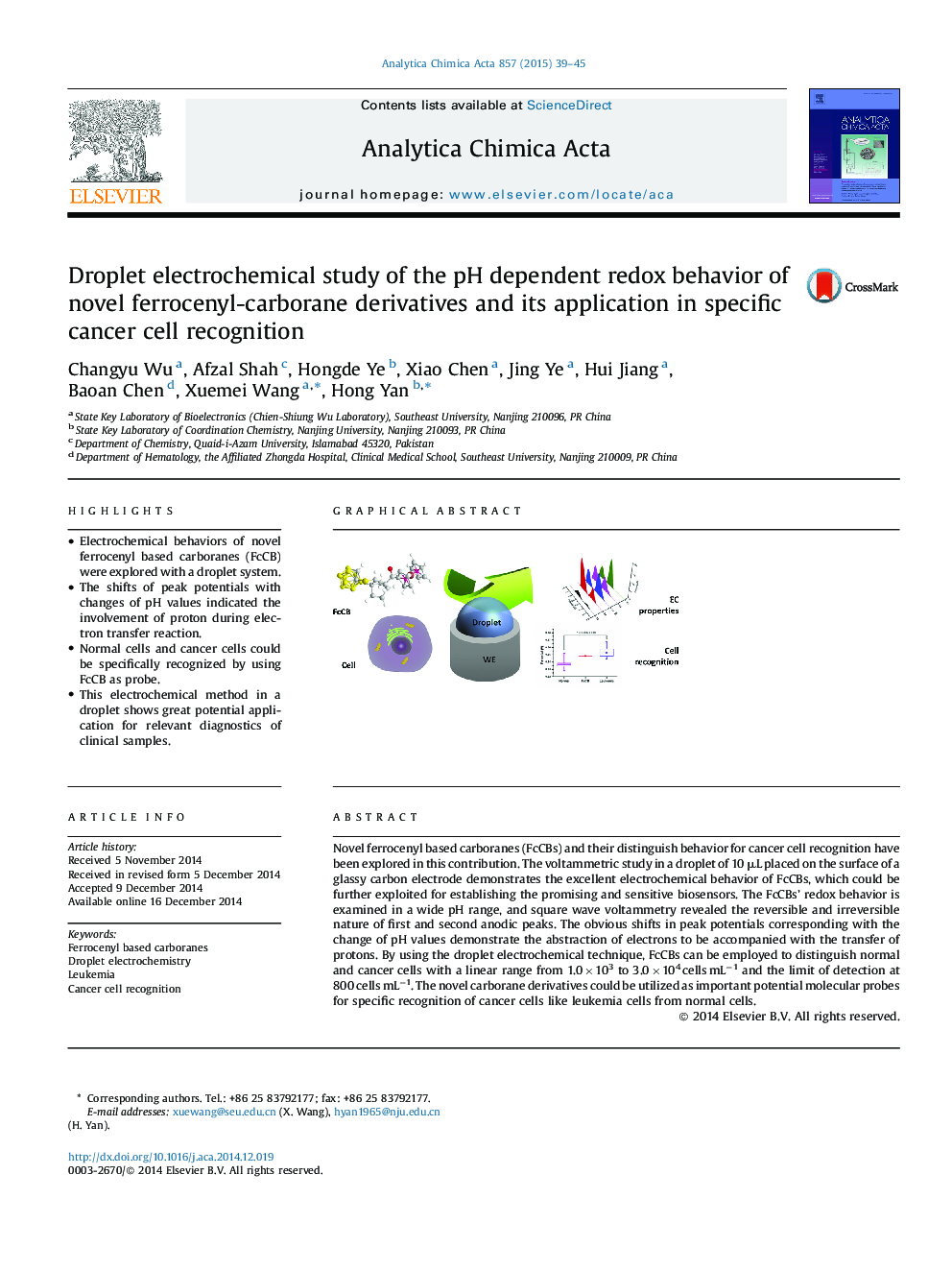| Article ID | Journal | Published Year | Pages | File Type |
|---|---|---|---|---|
| 1164167 | Analytica Chimica Acta | 2015 | 7 Pages |
•Electrochemical behaviors of novel ferrocenyl based carboranes (FcCB) were explored with a droplet system.•The shifts of peak potentials with changes of pH values indicated the involvement of proton during electron transfer reaction.•Normal cells and cancer cells could be specifically recognized by using FcCB as probe.•This electrochemical method in a droplet shows great potential application for relevant diagnostics of clinical samples.
Novel ferrocenyl based carboranes (FcCBs) and their distinguish behavior for cancer cell recognition have been explored in this contribution. The voltammetric study in a droplet of 10 μL placed on the surface of a glassy carbon electrode demonstrates the excellent electrochemical behavior of FcCBs, which could be further exploited for establishing the promising and sensitive biosensors. The FcCBs’ redox behavior is examined in a wide pH range, and square wave voltammetry revealed the reversible and irreversible nature of first and second anodic peaks. The obvious shifts in peak potentials corresponding with the change of pH values demonstrate the abstraction of electrons to be accompanied with the transfer of protons. By using the droplet electrochemical technique, FcCBs can be employed to distinguish normal and cancer cells with a linear range from 1.0 × 103 to 3.0 × 104 cells mL−1 and the limit of detection at 800 cells mL−1. The novel carborane derivatives could be utilized as important potential molecular probes for specific recognition of cancer cells like leukemia cells from normal cells.
Graphical abstractFigure optionsDownload full-size imageDownload as PowerPoint slide
